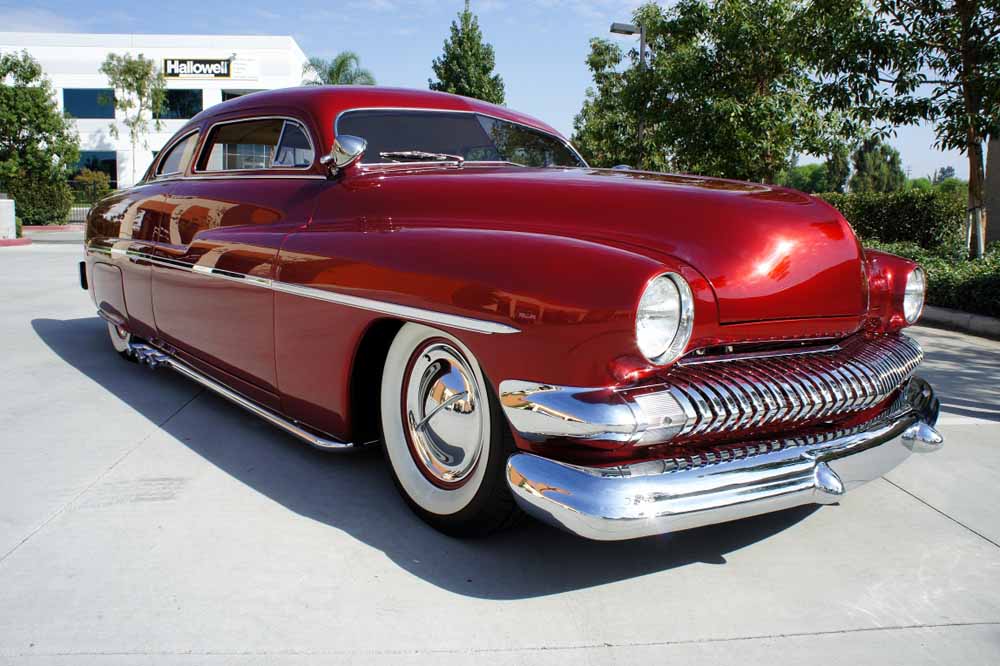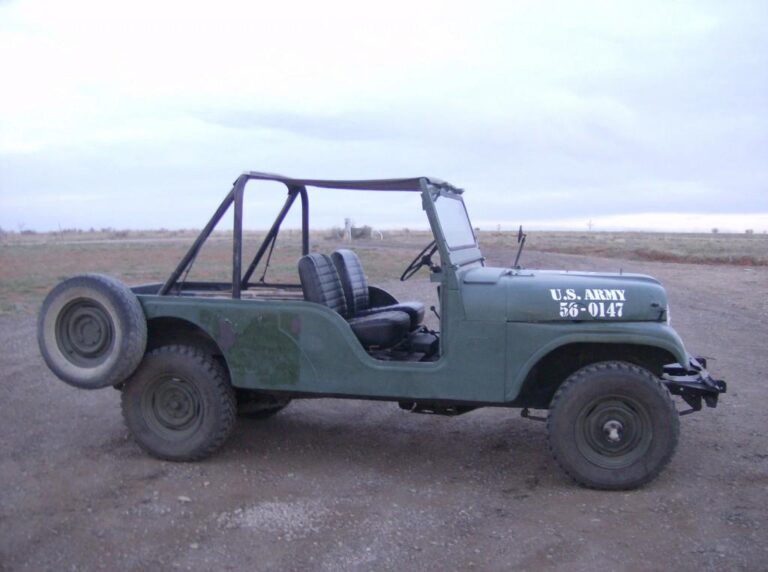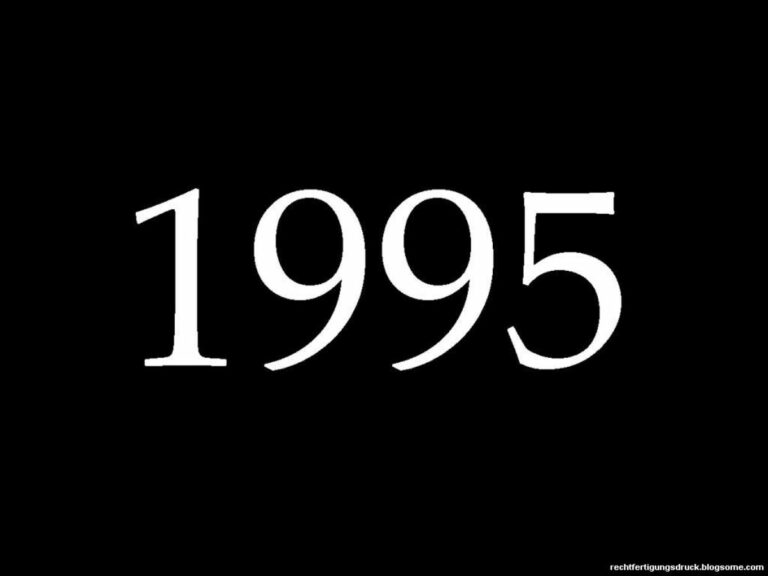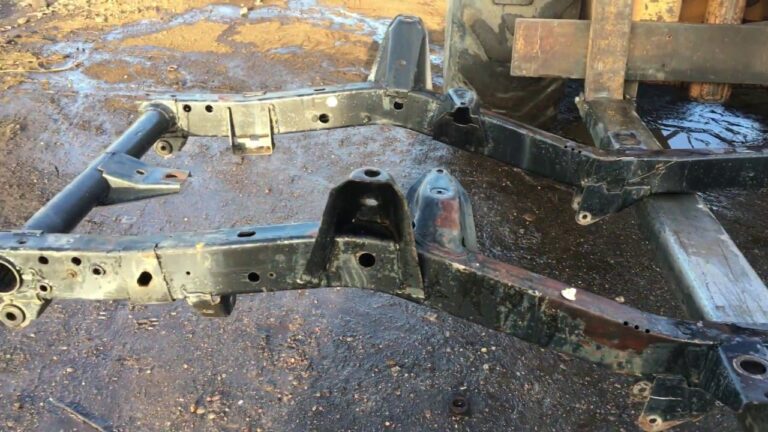1951 Jeep Willys For Sale: Your Guide to Owning a Piece of Automotive History
1951 Jeep Willys For Sale: Your Guide to Owning a Piece of Automotive History jeeps.truckstrend.com
For automotive enthusiasts and history buffs alike, the phrase "1951 Jeep Willys For Sale" evokes images of rugged durability, timeless design, and a direct lineage to one of the most significant vehicles in modern history. The 1951 Willys Jeep, primarily the CJ-3A "Universal Jeep" model, stands as a testament to American ingenuity, a vehicle that transitioned seamlessly from wartime hero to civilian workhorse, becoming an icon of off-road capability and utilitarian charm. Owning a 1951 Jeep Willys isn’t just about acquiring a vehicle; it’s about preserving a legacy, embracing a simpler era of motoring, and joining a passionate community of owners.
This comprehensive guide aims to equip you with all the essential information needed to navigate the exciting journey of finding, evaluating, and purchasing a 1951 Jeep Willys For Sale. From understanding its historical context and key features to practical advice on inspection, valuation, and ownership, we’ll delve deep into what makes this vintage machine a truly unique acquisition.
1951 Jeep Willys For Sale: Your Guide to Owning a Piece of Automotive History
The Enduring Legacy: Why a 1951 Willys?
The story of the Jeep begins in the crucible of World War II, where the Willys-Overland MB proved indispensable on every front. Post-war, Willys recognized the immense civilian potential of its robust design, leading to the creation of the "Civilian Jeep" or CJ series. The 1951 model year falls squarely within the production run of the CJ-3A, which was manufactured from 1949 to 1953.
The CJ-3A retained much of the CJ-2A’s core design but introduced a slightly higher windshield, a redesigned dashboard, and minor mechanical improvements aimed at making it more farmer-friendly and versatile for various civilian tasks. It was powered by the legendary "Go-Devil" L-head 4-cylinder engine, a powerplant renowned for its simplicity, reliability, and surprising torque. Coupled with a robust Warner T-90 3-speed manual transmission and a Dana 18 transfer case offering two-wheel drive, four-wheel drive high, and four-wheel drive low, the 1951 Willys was, and still is, an incredibly capable off-road machine.
The appeal of a 1951 Willys today goes beyond mere nostalgia. It’s the embodiment of mechanical purity: no complex electronics, no power steering (unless aftermarket), and no creature comforts to distract from the raw driving experience. Its straightforward design makes it relatively easy to maintain for the mechanically inclined, and its rugged construction ensures that many examples have survived decades of hard work and adventure. For many, a 1951 Jeep Willys For Sale represents a tangible link to a bygone era, a symbol of freedom, adventure, and the pioneering spirit.
What to Look For: Essential Inspection Points When Buying a 1951 Willys
When considering a 1951 Jeep Willys For Sale, a thorough inspection is paramount. These vehicles are over 70 years old, and their condition can vary wildly from meticulously restored showpieces to barn-find projects. Knowing what to scrutinize will save you significant time, money, and potential headaches down the road.
1. Body and Frame (Rust, Rust, Rust!):
Rust is the number one enemy of vintage Jeeps. Pay close attention to:

- Frame Rails: Check for severe pitting, cracks, or repairs (especially welds that look unprofessional).
- Floorboards: Both front and rear, especially under the pedals and seats. Often patched or replaced.
- Hat Channels: These are the supports under the floorboards that connect to the frame. They are notorious for rusting out.
- Fenders and Body Tubs: Check wheel wells, areas around the headlights, and the lower edges of the body.
- Tailgate and Windshield Frame: Common rust spots due to water collection.
- Signs of Bondo/Filler: Look for uneven surfaces, bubbling paint, or magnet tests to detect excessive body filler.

2. Engine and Drivetrain (The Go-Devil Heart):
- Engine (L-head "Go-Devil" 4-cylinder): Check for oil leaks (common but look for excessive pooling), unusual knocking or tapping noises, blue smoke from the exhaust (oil burning), or white smoke (coolant). Check the oil for signs of coolant. Perform a compression test if possible.
- Transmission (Warner T-90): Listen for grinding noises when shifting, especially into second or reverse. Check for fluid leaks.
- Transfer Case (Dana 18): Ensure it shifts smoothly into 2WD, 4WD High, and 4WD Low. Check for leaks.
- Axles (Dana 25 Front, Dana 44 Rear): Look for leaks at the differential covers and wheel ends. Check for excessive play in universal joints (U-joints). Engage 4WD and test drive on a safe, loose surface to ensure it works correctly.

3. Suspension and Steering:
- Leaf Springs: Check for broken leaves, excessive sag, or signs of poor repairs.
- Shackles and Bushings: Look for worn bushings or loose shackles, which can cause excessive play and clunking.
- Shocks: Check for leaks or signs of being completely worn out.
- Steering: Feel for excessive play in the steering wheel. Inspect the steering box, drag link, and tie rods for looseness or damage.
4. Brakes:
- Drum Brakes: These are standard. Check for firm pedal feel. A spongy pedal indicates air in the lines or a bad master cylinder. Listen for grinding noises.
- Brake Lines: Inspect for rust, cracks, or leaks.
5. Electrical System (6V vs. 12V):
- Original 6-Volt System: Confirm all lights, gauges, and the starter work. 6V systems can be finicky if not well maintained.
- 12-Volt Conversion: Many owners convert to 12V for easier starting and modern accessory compatibility. If converted, ensure it was done professionally with proper wiring and a 12V alternator/generator.
6. Interior and Accessories:
- Seats: Check for condition, often replaced with aftermarket units. Original seats add value.
- Dashboard: Functionality of gauges (speedometer, oil pressure, temp, amp meter).
- Top: Does it come with a soft top, hard top, or none? What’s its condition?
- Other Accessories: PTO (Power Take-Off) units, winches, heaters, or plows can add value or indicate a history of hard work.
7. Documentation:
- Ensure a clear title is available and matches the VIN (stamped on the frame and data plates).
- Maintenance Records: Any history of repairs or restoration can be invaluable.
Understanding the Market: Pricing and Valuation
The price of a 1951 Jeep Willys For Sale can vary dramatically based on several key factors, primarily its condition, originality, and any modifications. It’s crucial to understand these categories to set realistic expectations and budget effectively.
- Project Vehicle: These are typically non-running, incomplete, or heavily rusted vehicles requiring extensive work. They are often purchased for parts or by experienced restorers.
- Running Project/Driver Quality: These Jeeps are generally running and drivable but will have significant cosmetic flaws, some mechanical issues, or non-original parts. They are good candidates for gradual restoration or regular use.
- Well-Restored/Good Condition: These vehicles have undergone significant restoration work, are mechanically sound, and present well cosmetically. They may not be 100% original but are very presentable and reliable drivers.
- Concours/Show Quality: These are meticulously restored vehicles, often to original factory specifications, with high attention to detail and originality. They are typically trailered to shows and command the highest prices.
Factors Influencing Price:
- Originality: Highly original, unmolested examples often command a premium, especially if they retain their original engine, drivetrain, and specific CJ-3A features.
- Documentation: A clear title, service records, or even historical photos can add value.
- Location: Prices can fluctuate regionally.
- Market Demand: The classic car market, including vintage Jeeps, experiences trends.
While specific prices are always dynamic, the table below provides a general guide for a 1951 Jeep Willys For Sale:
| Condition Category | Estimated Price Range (USD) | Description |
|---|---|---|
| Project | $2,000 – $7,000 | Non-running, significant rust, incomplete, major mechanical issues. Best for experienced restorers or as a parts donor. Expect substantial additional investment. |
| Driver Quality | $8,000 – $18,000 | Runs and drives, but may have cosmetic flaws (paint chips, minor dents), some rust, and non-original parts. May need ongoing minor repairs or a full restoration in the future. Suitable for regular light use. |
| Well-Restored | $19,000 – $35,000 | Mechanically sound, largely rust-free, good paint and interior. May not be 100% factory original but presents very well and is reliable for regular driving and showing. Most common category for enthusiasts looking for a turn-key vehicle. |
| Concours/Show | $36,000 – $60,000+ | Meticulously restored to original specifications or better. Near-perfect paint, highly detailed engine bay, correct parts, and flawless operation. Often trailered to shows and rarely driven in harsh conditions. For the serious collector seeking peak originality and presentation. |
Note: These prices are estimates and can vary based on specific features, provenance, and market conditions at the time of sale.
Where to Find Your 1951 Willys: Acquisition Channels
Finding the right 1951 Jeep Willys For Sale requires patience and knowing where to look.
- Online Marketplaces: Websites like eBay Motors, Craigslist (local searches), Facebook Marketplace, and specialty classic car sites (e.g., Hemmings, ClassicCars.com) are popular starting points.
- Auction Sites: Bring a Trailer and Mecum Auctions often feature well-restored or unique examples, though prices can be higher.
- Classic Car Dealerships: Some dealerships specialize in vintage vehicles and may have a 1951 Willys in stock, often at a premium for their reconditioning and warranty.
- Willys/Jeep Clubs & Forums: Online forums and local clubs are excellent resources. Members often sell their vehicles to fellow enthusiasts, and you can get valuable advice.
- Private Sales: Word-of-mouth, local classifieds, or even spotting a "For Sale" sign can lead to unexpected finds.
Tips for Searching: Be patient. The perfect 1951 Jeep Willys For Sale won’t appear overnight. Broaden your search radius, as shipping can be arranged for distant purchases. Be wary of deals that seem too good to be true.
The Ownership Experience: Maintenance and Modifications
Owning a 1951 Jeep Willys is a rewarding experience, but it comes with its own set of considerations regarding maintenance and potential modifications.
Maintenance: The beauty of the 1951 Willys is its mechanical simplicity. Basic maintenance is straightforward for anyone with a modicum of mechanical aptitude.
- Regular Fluid Checks: Engine oil, transmission fluid, transfer case oil, and differential fluid.
- Greasing: Many grease points on the chassis, steering, and suspension require regular lubrication.
- Ignition System: Points, condenser, spark plugs, and wires need periodic inspection and replacement.
- Cooling System: Ensure the radiator is clean and the coolant is fresh to prevent overheating.
- Parts Availability: Surprisingly, many parts for the CJ-3A are readily available from specialty suppliers, either as new old stock (NOS) or aftermarket reproductions.
Common Modifications: While purists aim for originality, many owners make practical upgrades.
- 12-Volt Conversion: This is one of the most common and recommended upgrades, making starting easier, improving lighting, and allowing for modern accessories like a radio or phone charger.
- Disc Brake Conversion: While the original drum brakes work, disc brake kits significantly improve stopping power and reliability.
- Power Steering: Less common due to complexity but a welcome addition for some, especially for larger tires.
- Modern Tires: Radial tires can greatly improve ride comfort and handling compared to original bias-ply tires.
- Engine Swaps: While less common for a 1951 Willys (as it detracts from originality and value for many), some owners swap in more powerful modern engines for highway speeds or heavy off-roading.
Potential Challenges:
- Primitive Ride Quality: Expect a bouncy, firm ride. These vehicles were not designed for comfort.
- Slow Speeds: The "Go-Devil" engine, while reliable, is not built for speed. Highway cruising above 55 mph can be strenuous for the vehicle and the driver.
- Rust Prevention: Ongoing vigilance is required to prevent rust from returning or spreading.
- Lack of Modern Conveniences: No AC, power windows, or advanced safety features. This is part of the charm for some, a deterrent for others.
Legal and Logistical Considerations
Before finalizing your purchase of a 1951 Jeep Willys For Sale, consider these practical and legal aspects:
- Title and Registration: Ensure the seller has a clear title in their name, and that the VIN on the title matches the vehicle. Understand your state’s requirements for registering a vintage vehicle.
- Insurance: Standard auto insurance may not be suitable. Look into specialized classic car insurance, which often offers better coverage for agreed-upon value and lower premiums for limited use.
- Pre-Purchase Inspection (PPI): If you’re not an expert, hire a reputable mechanic specializing in vintage vehicles to perform a PPI. This unbiased assessment can uncover hidden issues and save you from costly surprises.
- Transportation: If purchasing out of state, factor in the cost of shipping. Enclosed transport is recommended for restored vehicles.
Conclusion: Driving a Legend
The 1951 Jeep Willys For Sale isn’t just a vehicle; it’s a testament to American industrial heritage, a symbol of freedom, and a ticket to a unique driving experience. Whether you’re a seasoned collector or a first-time vintage vehicle owner, acquiring a 1951 Willys promises a rewarding journey into automotive history. By understanding its quirks, performing a diligent inspection, and preparing for the joys and challenges of classic ownership, you can confidently embark on the adventure of bringing a piece of this enduring legacy into your garage. Embrace the simplicity, the ruggedness, and the undeniable charm of the 1951 Willys Jeep – a true automotive legend that continues to inspire.
Frequently Asked Questions (FAQ) about the 1951 Jeep Willys For Sale
Q1: Is a 1951 Jeep Willys a good daily driver?
A1: Generally, no. While incredibly robust, the 1951 Willys lacks modern safety features, comfort, and highway speed capabilities. Its primitive ride, lack of heating/AC, and slower speeds make it more suitable for weekend cruising, off-road adventures, or local errands rather than daily commuting.
Q2: Are parts readily available for a 1951 Willys?
A2: Yes, surprisingly so! Due to the popularity and longevity of these Jeeps, a strong aftermarket exists. Many reproduction parts are available, as well as New Old Stock (NOS) parts from specialty vendors. Common wear items are generally easy to find.
Q3: What is the top speed of a 1951 Willys Jeep?
A3: The 1951 Willys CJ-3A, with its original "Go-Devil" engine, typically has a top speed of around 45-55 mph, depending on gearing, tire size, and condition. It’s not designed for high-speed highway travel.
Q4: Is it difficult to maintain a 1951 Willys?
A4: Mechanically, they are quite simple and relatively easy to work on for the average enthusiast. There are no complex computer systems. However, they do require regular maintenance, including frequent greasing and fluid checks, to keep them running reliably. Rust prevention is an ongoing concern.
Q5: Should I buy a fully restored 1951 Willys or a project vehicle?
A5: This depends entirely on your budget, mechanical skill level, and available time.
- Restored: More expensive upfront, but turn-key and ready to enjoy. Less time and effort required immediately.
- Project: Much cheaper to acquire, but requires significant time, money, and skill for restoration. Can be a rewarding experience if you enjoy hands-on work and have a clear vision. Be realistic about the total cost, which often exceeds the purchase price of a restored vehicle.
Q6: What’s the main difference between a CJ-2A and a CJ-3A (like the 1951 model)?
A6: The CJ-3A (1949-1953) is an evolution of the CJ-2A (1945-1949). Key differences include a one-piece windshield that is taller and fixed (it does not fold flat like the 2A’s split windshield), a redesigned dashboard, and minor mechanical improvements aimed at making it more farmer-friendly. The hood is also slightly taller on the CJ-3A.
Q7: How important is originality for a 1951 Willys?
A7: For collectors and those seeking maximum resale value, originality is very important. Matching numbers (original engine, frame, body) and period-correct features command higher prices. However, for those looking for a reliable driver or off-roader, tasteful modifications (like a 12V conversion or disc brakes) can enhance usability without severely detracting from value for the right buyer.






